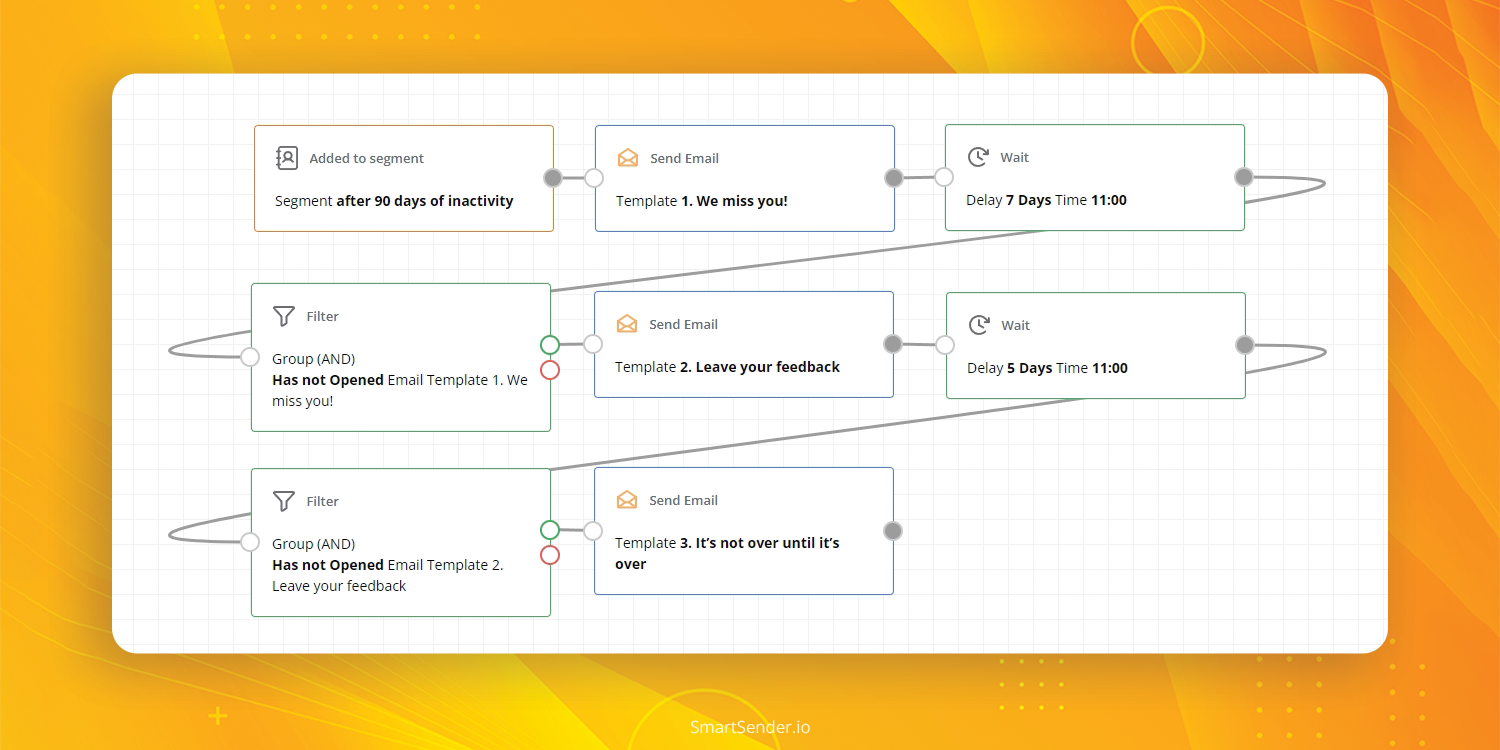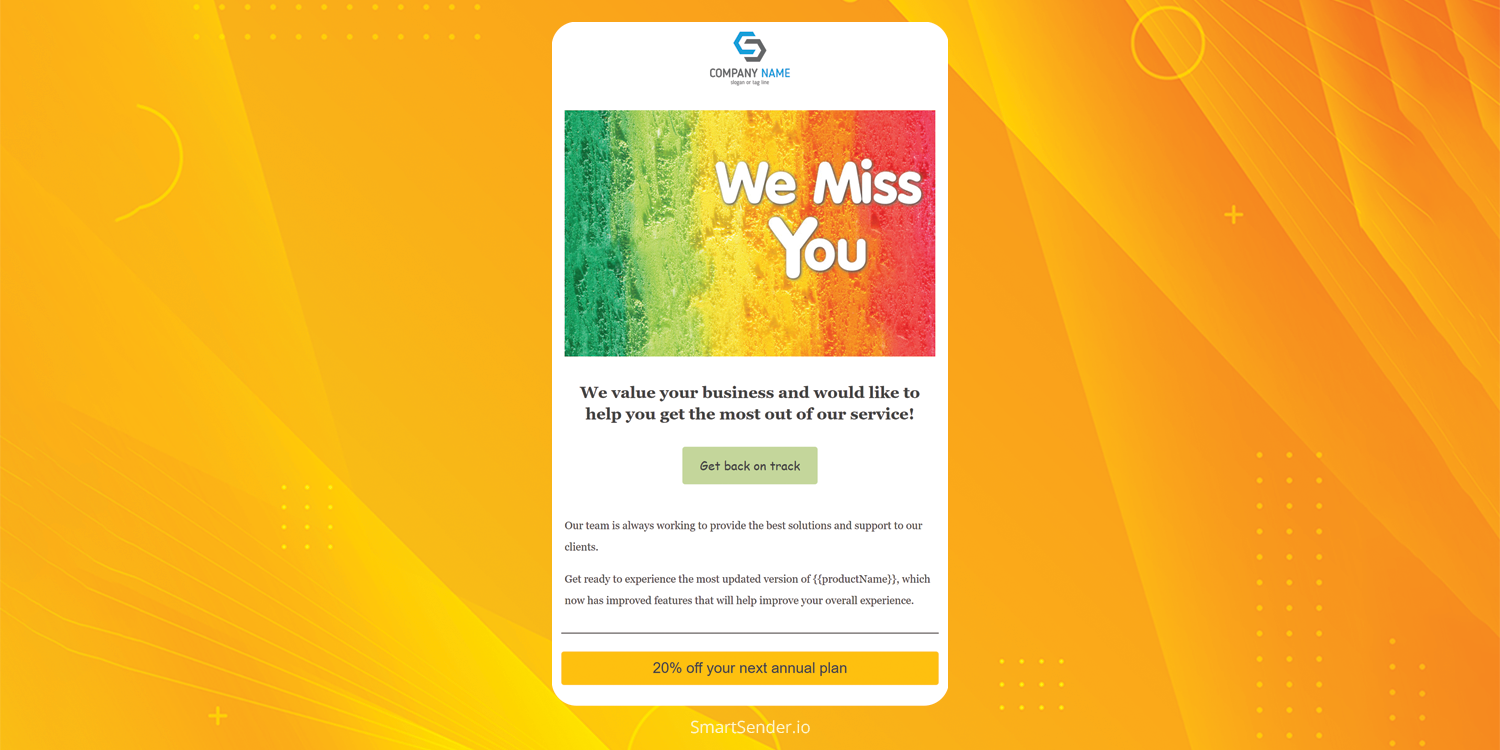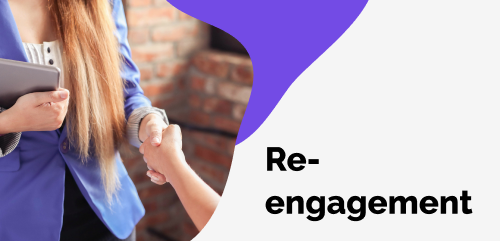Re-engagement email campaign
Preview the Workflow
Author:
Categories:
Tools:
Publication date:
Plan:
Description:
When your subscribers stop interacting with your business, it is a critical alert that should prompt you to consider re-engaging them. It is important to note that if no action is taken, around 60% of passive customers will eventually unsubscribe. Losing them after you have exerted so much effort, time, and money into expanding your email list is not fun.
You should not give up on those contacts. Your primary goal now is to regain their interest in your business.
Here with this workflow, we suggest you automate the win-back process. There are three emails in the chain, and the order is as follows:
Template 1 - Remind people you exist and offer an incentive. A simple reminder message and offering an incentive can nudge people to interact with your business again.
Template 2 - Ask for feedback. Questions can put them on a path to help you solve their problem or provide valuable insight into what's holding them back from engaging with your business.
Template 3 - A last-chance email. Tell people that you'll unsubscribe them unless they respond to this email.
It's essential to make sure that each email includes an unsubscribe link or opt-out option. It's even better to send a separate email with an unsubscribe option. Yet, always keep the door open; just because they unsubscribe doesn't mean they won't return.
Timeframes. It's generally a good idea to start your win-back email campaigns at least three months after the last interaction. However, determining whether a contact is "active" or "inactive" largely depends on how you define an active contact for your business. The break between the emails sent can be a week or a month.
Remember, re-engaging inactive contacts is not an overnight process. It requires patience, persistence, and creativity. But with the right approach, you can win back their interest and loyalty to your business.




